Past Research
Ph.D. Thesis
Integrated Modeling for
Space Interferometry Mission (NASA-JPL)
Recent Projects
Noise & Vibration Control using Piezo Actuators
Sponsor: TÜBİTAK
|
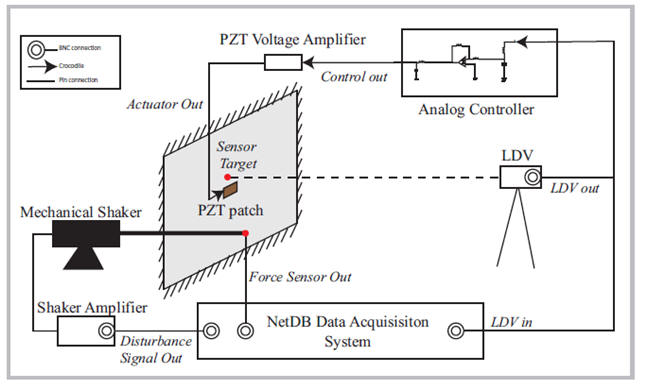 |
|
Project Definition:
In recent years, many researches showed that Active Vibration Control (AVC)
can successfully reduce vibration of structures at low frequency. Due to
this fact, AVC has found many application areas. In this project we are
developing new control techniques in order to reduce and control
vibrations of flexible panels using piezo actuators. Optimal position of
the sensor actuator locations and different control algorithms are
investigated to improve the performance of the controller.
|
Prediction of Underwater Acoustic Radiation Induced by Machine
Vibration on Ship Structures
|

|
|
Project Definition:
Survivability and stealth
are the major attributes for surface naval ships and submarines. One of
the way for maintaining the survivability and stealth is to minimize the
underwater acoustic signature of the ships. Among several contributions
of the acoustic signature, machine vibration induced underwater noise is
obviously one of the dominant components. In this project, our main goal
is to determine a relationship between the machine vibration, structural
vibration and underwater noise radiation and create a correlation
between them by using coupled Finite Element Method (FEM) - Boundary
Element Method (BEM) and also validating our results by experimental
studies. Thus, outputs of this project will play a big role during the
preliminary design stage of the ship construction.
|
Investigating the Sound Pressure Level Inside the Passenger Cabin
of an Automobile using a Vibro-Acoustic Model
Sponsor: TÜBİTAK, Ford Motor
Company
|
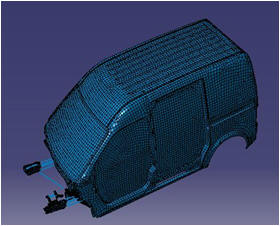

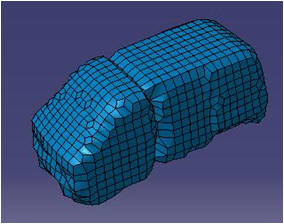
FEM model
BEM model |
|
Project Definition:
The interior noise inside
the passenger cabin of automobiles can be classified as structure borne
or airborne. In this study, we investigate the structure-borne noise
which is mainly caused by the vibrating panels enclosing the vehicle.
Excitation coming from the engine causes the panels to vibrate at their
resonance frequencies and these vibrating panels cause a change in the
sound pressure level (SPL) inside the passenger cabin and undesirable
booming noise. In order to improve the passenger comfort inside the
vehicle, it is critical to understand the dynamics of the vehicle and
more importantly how it couples with the air inside the cabin. The
design parameters of the most influential radiating panels (i.e.,
thickness) can then be optimized to reduce the interior noise based on
the performance metrics selected during the design process. |
Modeling and Dynamic Characterization of Micro Systems
|
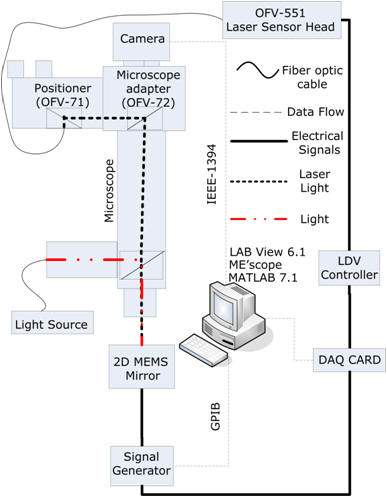
Experimental
modal analysis set-up for micro systems
|
|
Project Definition:
Micro Electro Mechanical
Systems (MEMS) are among the new and emerging technologies of the future
and have many applications in different disciplines. Predicting and
improving the performance of such systems early in the design process
can significantly impact the design cost and also improve the quality of
the design.
|
Integration of Structural Modification Methodology with Vibro-Acoustic
Analysis
in collaboration with
Prof. M. Nevzat Özgüven from Middle East Technical University
Sponsor: TÜBİTAK
|

|
|
Project Definition:
The structural design of
the panels can be modified to improve the interior noise inside the
passenger cabin of automobiles. However, such changes require
considerable computational time especially when the structural models
are very complex. In this study, the receptances of the original
structure are used with the dynamic stiffness of the components that are
added or removed from the original structure to perform the structural
modification. The receptances of the modified structure are calculated
using the structural modification technique. Then these results are used
to perform the vibro-acoustic analysis of the modified structure.
|
Design Optimization of Front Suspension System
Sponsor: Tofas A.Ş. (Partially
owned by FIAT)
|
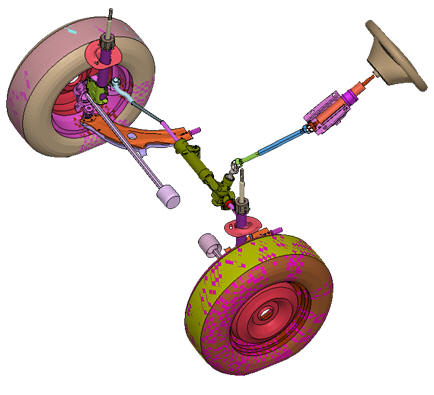
|
|
Project Definition:
Suspension system of a
vehicle plays an important role in maintaining comfort of the passengers
by isolating and absorbing road shock from the passenger compartment.
For that purpose, it is critical to understand the dynamics of the
suspension system components and more importantly, how they interact
with each other. In this project, we analyzed the effect of the dynamic
properties (eg: mass, spring and damping) of the system components on
the performance of the suspension system. We developed a methodology for
defining the optimal relationship among vehicle suspension parameters
and suspension performance indices. Our results show that the
methodology developed in this study can be effectively used for
improving the design of the vehicle suspension system.
|







